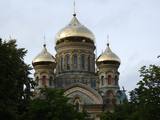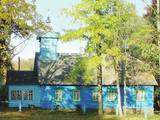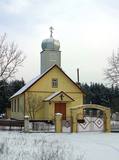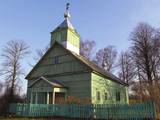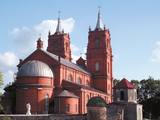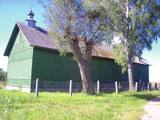| Nr | Nosaukums | Apraksts |
|---|---|---|
|
Krimuldas luterāņu baznīcu uzskata par vienu no vecākajām Latvijas baznīcām. Tā celta 13. gs. sākumā drīz pēc Kubeseles iekarošanas un vēlākajos gadsimtos daudzkārt pārbūvēta. Blakus baznīcai izveidots meditācijas labirints "Lilijas zieds". Kad 1217. g. pie Vīlandes kaujā krita lībiešu virsaitis Kaupo, tā pelnus pēc nostāstiem esot apbedījuši baznīcā. Par Kaupo kapa vietu tautā gan dēvē nelielu pauguru pie turpat netālu esošās Runtiņupītes (Runtiņš), kuras labajā krastā atrodas ~ 7 m gara mākslīgi veidota ala - Kubeseles jeb Runtiņala. Runtiņupītes kreisajā krastā slejas Kubeseles pilskalns. Pie baznīcas sākas Kubeseles dabas taka. To izstaigājot, var iepazīt visus iepriekš minētos u.c. objektus, kā arī aiziet līdz Gaujai, kuras labajā krastā iegūlis Lielais (Runtiņa) akmens. Netālu no akmens apskatāmi Gaujas plostnieku uzstādītie enkurkluči. |
||
|
Atrodas 2,5 km no Bārtas centra, Bārtas upes labajā krastā. Mūsdienīgais dievnams tapis 2002. gadā (arhitekte: A. Siliņa). |
||
|
Pareizticība Traķu apkārtnē „ienāca” jau Lietuvas dižkunigaiša Ģedimina (Gediminas) valdīšanas laikā (1316. – 1341.). Līdz 18. gs. beigām no astoņām pareizticīgo baznīcām Traķos nebija saglabājusies neviena, tādēļ pareizticīgo draudze 1863. g. uzcēla jaunu baznīcu, kas saglabājusies līdz mūsdienām un apskatāma Vitauta ielā (Vytauto gatve) 32. |
||
|
Krustceļu vecticībnieku draudzes dievnams celts 1939. gadā
|
||
|
Dievnams celts 1900. - 1903. g. bizantiešu stilā kā kara garnizona baznīca, kuras iesvētīšanā (godinot visu jūrnieku aizstāvi – Sv. Nikolaju) piedalījies cars Nikolajs II. Grezno ēku izlaupīja vācieši 1. pasaules kara laikā. Pirmās Latvijas brīvvalsts laikā katedrāle darbojās kā Liepājas garnizona Dievnams. Padomju armija tā telpas izmantoja kā sporta un matrožu kluba kinoteātri un noliktavu. Saglabājušies nostāsti, ka padomju zaldāti esot no fasādes svētbildēm lauzuši zelta mozaīkas gabaliņus. Tagad baznīcā saimnieko pareizticīgo draudze. Katedrāles celtniecībā izmantota unikāla nepārtrauktās betonēšanas tehnoloģija, tādēļ būves konstrukcijām nav atbalsta kolonnu, un to smagums ir balstīts tikai uz ēkas sienām. Tās notur četras krustojošās arku velves. Šobrīd Latvijā augstākā pareizticīgo katedrāle.
|
||
|
Rečinas vecticībnieku kopienas lūgšanu nams celts 1912. gadā. Taisnstūrveida vienas halles ēka
ar laukakmeņu mūra pamatiem un mazu cekulveida tornīti virs altāra gala. Galvenā ieeja sānu fasādē.
|
||
|
Meklējama Nīcgalē, starp Rīgas – Daugavpils šoseju (A 6) un Daugavas krastu. Baznīcu cēla (neogotikas stils) pēc muižnieka Henriha Plātera - Zīberga iniciatīvas 1862. - 1863. g., veltot to Jaunavas Marijas dzimšanai. Kā jau daudzas citas baznīcas, arī šī ēka un tās interjera priekšmeti cieta 1. pasaules kara laika notikumos. To atjaunoja 1922. gadā. Baznīcas iekārta ir saglabājusies no 19. gs. 60. gadiem, bet, centrālā altāra augšdaļu pārbūvēja 1957. gadā. Dažus gadus vēlāk - 1961. g. uzstādīja ērģeles. |
||
|
Atrodas Labraga – Apriķu ceļa malā. Kāds nostāsts vēsta, ka to 1896. gadā cēlis vietējais muižkungs, kurš vēlējies, lai viņa meitas laulības notiktu baznīcā. Dievnamā atrodas altārglezna "Kristus pie krusta un Sv. Marija Magdalēna", kas gleznota 19. gadsimtā (autors T. Šprengels). |
||
|
Štikānu vecticībnieku draudzes dievnams. 20. gs. 40-jos gados
tika organizēta dievnama celtniecība uz veciem pamatiem. Šo namu
cēla brāļi Uljans un Epifans Rogozini. Štikānu dievnamā atrodas
aizsargājams mākslas priekšmets – Evaņģēlijs.
|
||
|
Saulainā laikā spilgti baltā celtne, kas atrodas ciema dienviddaļā, pamanāma jau pa lielāku gabalu. Pirmo koka baznīcu sv. Pētera un Pāvila godam šeit 1759. g. uzcēla jezuīti. Mūsdienās redzamā baznīca ir tapusi gandrīz pusotru gadsimtu vēlāk - 1893. g. Dievnams no iekšpuses apskatāms dievkalpojuma laikā. Baznīcas dārzā apbedīts lietuviešu izcelsmes garīdznieks un koktēlnieks Antons Rimovičs (1865. – 1933.). Iepretim baznīcai atrodas draudzes nams. |
||
|
Lai arī dievnama pirmsākumi meklējami 18. gs. sākumā, tā celtniecību (arhitekts Johanns Eduards de Vite) pabeidza viena gada laikā 1834. – 1835. g. (vēlīnā klasicisma stils). Būvniecības darbus finansēja Krievijas cars. Gan baznīcas atrašanās piejūrā, gan arī tās nosaukums liecina, ka tā celta, godinot Svēto Nikolaju, kas ir visu jūrnieku un zvejnieku aizbildnis. Baznīca apskatāma arī no iekšpuses, kur uzmanība jāpievērš ērģelēm un altārgleznai (1888. g.). |
||
|
Maltas (Borovajas) vecticībnieku kopienas lūgšanu nams ir vietējās
nozīmes arhitektūras piemineklis. Dievnama celtniecība sākta 1931. gadā, un
to cēlis būvuzņēmējs A. Gruncevičs.
|
||
|
Baznīca atrodas Sodu ielā (Sodų gatve) 8. Tās pirmsākumi meklējami 1409. g. (viena no vecākajām Lietuvas baznīcām), kad Lietuvas dižkunigaitis Vītauts Dižais izveidoja Traķu apgabala baznīcu. Dievnams joprojām ir pazīstams ar 1123. g. Konstantinopolē gleznotās Traķu Dievmātes gleznu, kuru it kā Vītautam 1390. g. uzdāvinājis Bizantijas ķeizars Emanuels Paleologs II. Šis fakts gan ir jāuzskata par leģendu, ko aprakstījis vēsturnieks Albertas Vijūkas – Kojalavičius, jo 1645 g. gleznas restaurācijas laikā noskaidrojās, ka tā ir tapusi 15 gs. beigās vai 16. gs. sākumā. Traķu Dievmātes glezna ir pirmā Lietuvas pāvesta vainagotā glezna (vainagošanas ceremonija notika 1718 g.), pēc kuras brīnumus piedzīvojuši daudzi ticīgie - gan katoļi, gan pareizticīgie, gan pagāni, gan tatāri. Latvijā - Aglonas bazilikā atrodas šīs gleznas kopija, ko uzskata par svētu! Vislabākais skats uz baznīcu, Traķu ezerpili un Traķiem paveras no klaja paugura Galves (Galvė) ezera ziemeļu krastā. |
||
|
Puderovas vecticībnieku kopienas lūgšanu nams. Vietējās nozīmes arhitektūras piemineklis,
celts 20. gs sākumā.
|
||
|
Gurilišku vecticībnieku kopienas lūgšanu nams tika uzcelts
20. gadsimta sākumā, un tas var lepoties ar baznīcas zvanu, kas tika
izliets 1939. gadā un vēl joprojām darbojas.
|
||
|
Atrodas Tirgoņu un Zāļu ielas krustojumā (Zāļu ielā 12). Interesanta ar faktu, ka šī ir vienīgā padomju laikā uzbūvētā (1948. g., pēc citiem avotiem – šajā gadā atjaunota) Latvijas baznīca. |
||
|
No koka vietējo amatnieku celtais dievnams par grāfu Plāteru līdzekļiem tapis laikā no 1655. - 1658. gadam kā miniatūra vienjoma bazilika. Vienreizējo kultūrvēstures pieminekli uzskata par vienu no Latgales vecākajām koka baznīcām. Tās centrālā altāra kokgriezumus barokālās formās veidojuši Stelmužes koktēlnieku skolas meistari. Sānu altārī atrodas 18. gs. vidū tapusī glezna “Sv. Marija Magdalēna”. Dievnams uz patreizējo vietu – Daugavas labajā krastā ir pārvietots 1698. gadā. Ēka vairakkārt - 1890. un 1918. g. atjaunota. Baznīcai apkārt stiepjas 17. gs. beigās būvēts mūra žogs ar 19. gs. vidū celtu brīvi stāvošu zvanu torni, kas restaurēts 2002. g. Pēc dažādiem informācijas avotiem var spriest, ka Indricas draudze ir Latgalē vecākā. |
||
|
Kaltenes luterāņu draudzes un baznīcas vēsture aizsākusies 1567. gadā, kad Kurzemes hercogs Gothards Ketlers izdevis pavēli būvēt Kurzemē jaunas baznīcas. Kā viena no tām tapusi arī baznīca Kaltenē. Tā saukusies par Svētās Katrīnas baznīcu. 1848. gadā vecās koka baznīcas vietā uzcelta baznīca no māla kleķa. 1880. gadā tai piebūvēta sakristeja, bet pati baznīcas ēka tikusi pārbūvēta un paplašināta 1896. gadā. Tā cietusi pirmā pasaules kara laikā no krievu mīnu kuģa šāviņa. Baznīca atjaunota 20.gs. divdesmito gadu pirmajā pusē. Kaltenes baznīcas altārgleznu „Kristus un Sv. Pēteris uz jūras” gleznojis M.Pols 1898. gadā (pēc R.Rihtera darba motīviem).18.gs. darinātā kancele un ērģeles, kas atrodas baznīcā ir valsts aizsargājamie kultūras pieminekļi. Ērģeles būvējis ērģeļu speciālists Augusts Martins 1843. gadā, un tās sākotnēji uzstādītas Gulbenes baznīcā. 1943. gadā ērģeles pārvestas uz Kaltenes baznīcu. Šīs ērģeles ir vecākais līdz mūsdienām saglabājies A.Martina būvētais instruments. Baznīcas zvans izgatavots 2006. gadā „Liepājas Metalurgā”. 2012. - 2013. gadā pie baznīcas uzcelta jauna draudzes māja. Pie baznīcas vārtiem uzņemti pirmie kadri kinofilmai "Ilgais ceļš kāpās", kā arī "Meldru mežs". Turpat netālu atrodas mājas ar nosaukumu „Putniņi”. 1921. g. šajās mājas Kaltenē viesojies pats tā laika Kultūras ministrs Rainis. Šeit tajā laikā atradās veikals. 2. pasaules kara laikā vācieši nodedzināja vecās Putniņu mājas. (Avots: Rojas TIC) |
||
|
Nautrēnu (Rogovkas) Jaunavas Marijas Bezvainīgās Ieņemšanas Romas katoļu baznīca būvēta no ķieģeļiem pseidobaroka stilā ar diviem augstiem torņiem vecās baznīcas vietā no 1901. līdz 1914. gadam. 1939. gadā pirktas ērģeles, kuras ir valsts nozīmes mākslas piemineklis. |
||
|
Kampišku vecticībnieku kopienas lūgšanu nams rekonstruēts
1931. gadā pēc arhitekta V. Šervinska plāna. Dievnams ir augsts un
plašs, ar divām cellēm. Rietumu pusē ir augsts taisnstūrveida zvanu
tornis, kuru rotā krusts.
|
||


